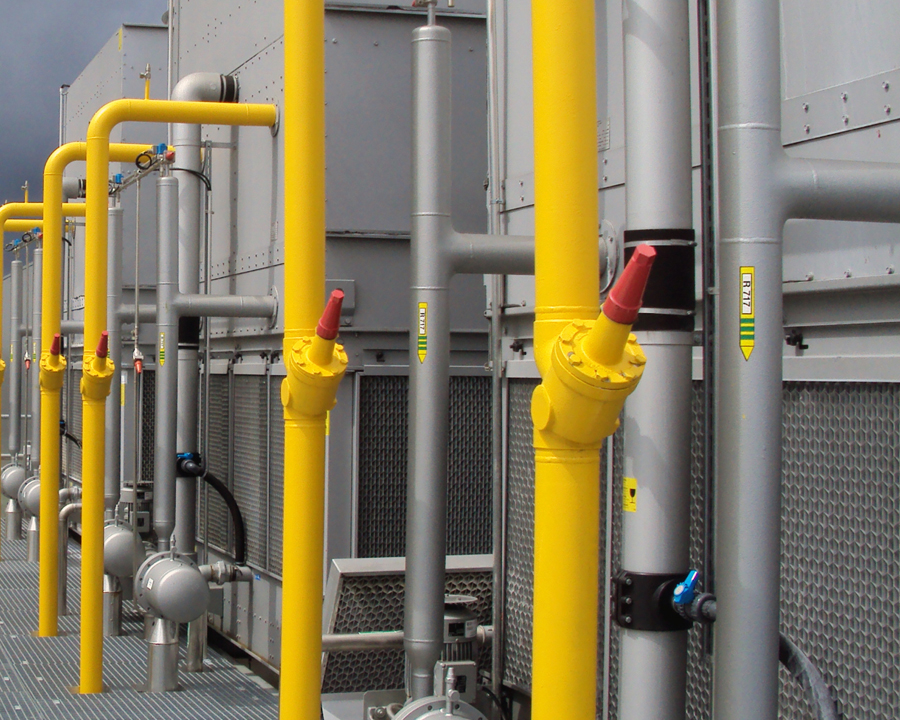
The function of a cooling tower is to exchange heat between the cooling water carrying waste heat and the air inside the tower, allowing waste heat to be transmitted to the air and dispersed into the atmosphere. Cooling towers are divided into two forms based on the contact mode between cooling water and air: wet cooling towers and dry cooling towers. In a wet cooling tower, water comes into contact with air. After operating for a period of time, pollutants in the air, such as dust, debris, soluble gases, and bacteria, can enter the circulating cooling water system. As the cooling water continues to circulate and evaporate, the nutrient sources in the water increase, promoting the rapid proliferation of algae and microorganisms. This not only deteriorates the water quality of the process water, but also mixes with other impurities to form sticky scales. At the same time, salt concentration occurs, and the hardness of the cooling water increases, causing corrosion and scaling of the circulating equipment pipelines, reducing the heat transfer efficiency of the heat exchanger, reducing the water flow section, and even causing corrosion and perforation of the pipelines in the circulating equipment, Thus reducing the service life of refrigeration equipment.
In a dry cooling tower, cooling water flows inside the coil tube, avoiding direct contact between water and air. The water quality inside the tube is good, effectively protecting the refrigeration equipment, improving its efficiency, and extending its service life. However, its cooling effect is poor and often cannot meet the refrigeration requirements of the process. With the development of production, people have put forward higher requirements for cooling towers. Dry and wet cooling towers combine the advantages of the above two types of cooling towers, while improving and optimizing the internal structure of traditional cooling towers. This not only meets the refrigeration requirements of the process, but also ensures the purity of the water inside the pipes. At the same time, the dry and wet cooling tower has a wide range of uses, strong adaptability to the environment, can cool high-temperature water, safety and fire prevention, etc. In the transitional season, it can also be switched with the chilled water system to provide free cooling for buildings, saving the operating costs of the refrigeration machine. It can be seen that dry and wet cooling towers also have broad application prospects in the field of air conditioning.
In the wet cooling tower, the air is in direct contact with the cooling water, and the heat in the water is transferred to the air through contact heat transfer and evaporation heat dissipation. The heat exchange efficiency of wet cooling tower is high, and the cooling limit temperature is the Wet-bulb temperature of air. However, water is lost due to evaporation, which in turn increases the salinity of the circulating process water. In order to stabilize water quality, it is necessary to frequently add chemicals for filtration and timely discharge. The investment and operating cost of the discharge method are low, so it is widely used. Its treatment method is to discharge a part of the process water with high salinity, and rely on supplementing new water to reduce salinity, resulting in pollution losses; Floating water means that when the process water is in direct contact with the air, part of the process water will evaporate into the air due to evaporation and heat dissipation, and become water vapor. As the air goes out, floating water loss exists. In a dry cooling tower, the heat exchange between the air and process water is completed through the surface heat transfer of a radiator composed of metal pipes, which transfers the water heat inside the pipes to the air flowing outside the radiator. Therefore, there is no evaporation loss of water, no floating water loss, and no pollution discharge loss in the dry tower; However, the heat exchange efficiency of dry tower is lower than that of wet tower, and the limiting temperature of cooling is the Dry-bulb temperature of air. And the dry tower requires a large number of metal pipes, so the cost is 4-6 times that of a wet tower of the same capacity. The dry wet cooling tower combines the advantages of the above two towers, avoiding water loss and improving the heat exchange efficiency of the cooling tower, and greatly reducing its material cost.

